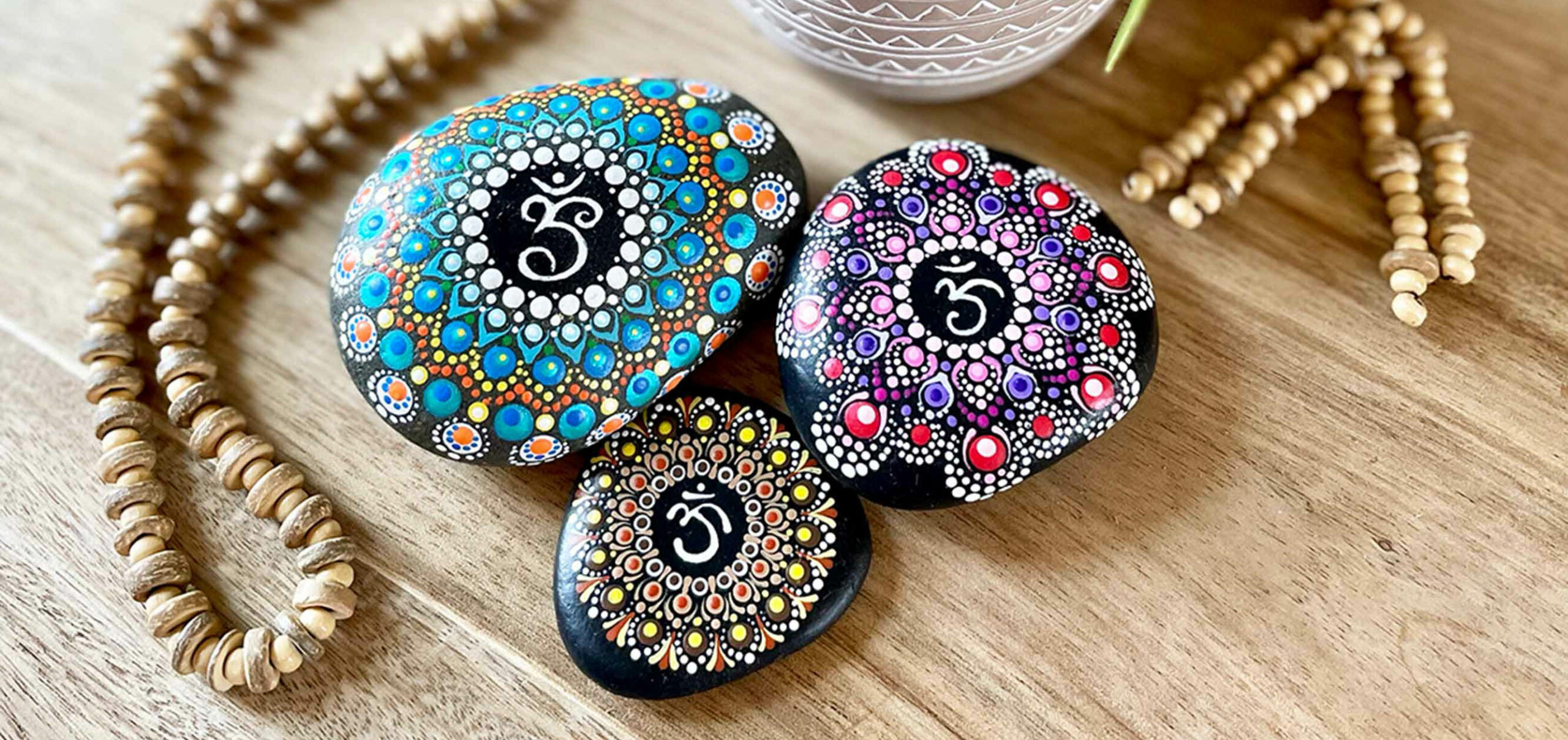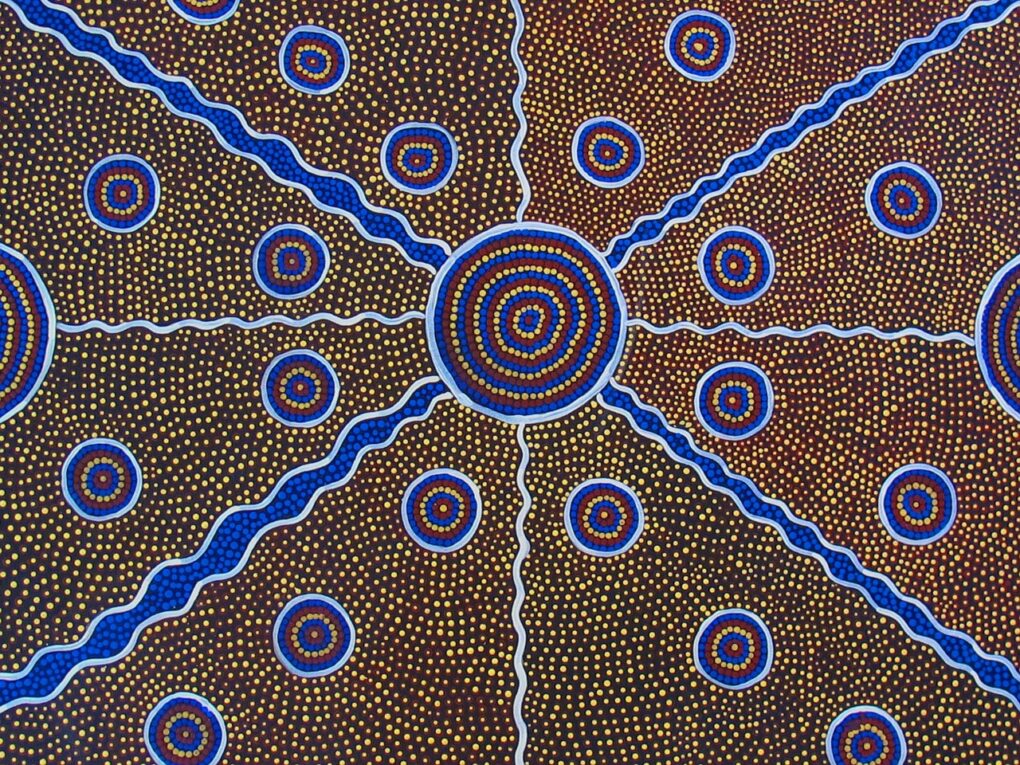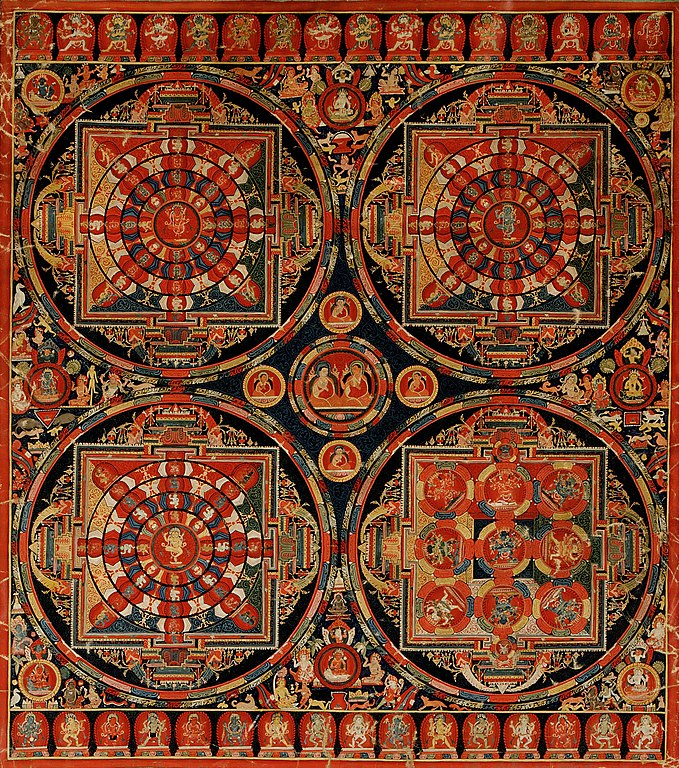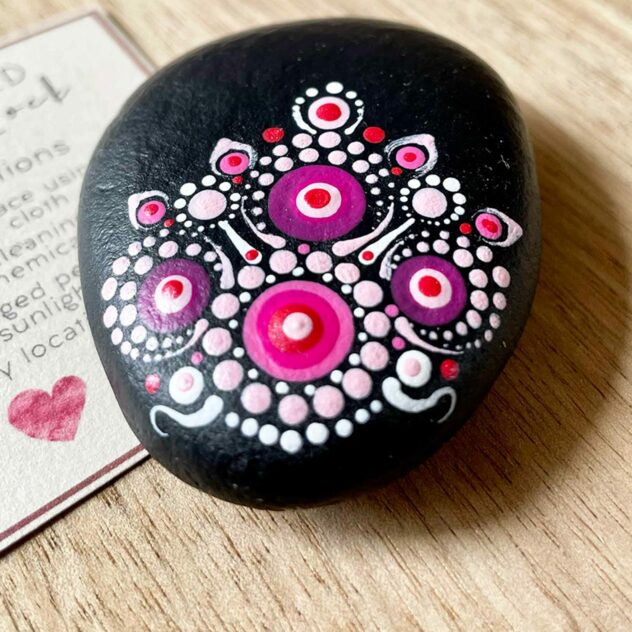Mandala Dot Painting

Mandala dot painting is a beautiful blend of creativity and mindfulness, where art becomes a form of meditation. Using simple dots of paint to form intricate, symmetrical patterns, this practice invites calm, focus, and self-expression with every stroke. Rooted in ancient symbolism, mandalas represent unity and balance, making dot painting not just visually captivating, but also deeply soothing for the mind and spirit.
What is Dot Art?
Dot art is a form of painting that has its origins in Aboriginal Australia. It is a technique in which various dots of paint are applied in patterns to form an overall design or image. Originally, this artwork depicted sacred stories, rituals and ceremonies hidden within the dots so that they could not be deciphered by Western colonists or other Aboriginal groups. Also, they were drawn on the ground or in the sand so that they could easily be erased if needed.

Over time, Indigenous and Aboriginal artists started painting them on canvas using modern acrylic paints and special tools to create different sizes and textures of the dots. The result was amazingly beautiful pieces of art that brought out the spirit and essence of Aboriginal Australians, their land and their secrets.
Dotting involves a high degree of patience, time, devotion and attention to detail. The speed, pressure and even the act of dipping and placing the dots can be a wonderfully meditative, soothing, therapeutic and relaxing experience.
What is a Mandala?

A mandala is a geometric symbol that was traditionally used as a tool to practice meditation and focus. Originating from the South Asian religions of Buddhism and Hinduism, it consisted of a circle, usually around a square with “gates”, that had symmetrical or geometric designs. Some even included elaborate artwork of deities, mantras, mountains, animals and the cosmos. The intricacy of these patterns clearly symbolized layers of the self, wholeness, awakening, the universe and spiritual journeys that we all take.
The divine and cosmic significance of mandalas were not only used in Hinduism and Buddhism, but also in many cultures and religions around the world. It may be surprising to learn that they even appeared in Christian architecture, Celtic designs and in the Mesoamerican Mayan and Aztec civilizations. As time progressed, the intangible spiritual quality of these circular designs emerged in art, psychology, science, the pursuit of higher consciousness and the New Age movement.
In contemporary Indian art, they are beautifully created in rangoli (decorative patterns made from colorful powder, sand or rice flour) and kolam (symmetrical Tamil dot and line patterns made from stone or chalk powder). With motifs of flower petals, feathers, leaves, astrological symbols and other patterns of nature, they happily represent a positive mindset, prosperity and good luck for the household.
Mandala Dot Painting

Merge the meditative experience of dotting with the divine significance of mandalas, and you get a spiritual artistic creation like no other! The act of dotting mandalas is very relaxing and therapeutic because your entire attention is focused on the creation of beauty, symmetry and detail. As a final product, they make gorgeous pieces of art, meaningful gifts, exquisite decorative items and even an effective meditation tool to gaze upon.
Mandala dot painting can be done on pretty much anything – rocks, wood, cups, pots, glass, canvas and much more. Even a pebble from the garden can be transformed into a precious token of spiritual art. With some good quality acrylic paints and a few tools from around the house, such as a toothpick or a pencil, it’s easy to get started. The more serious artist can invest in more tools such as stencils, rods, ball styluses and more.
Mandala dot painting is a simple and relaxing way to express creativity while finding a moment of calm. Each dot encourages focus and mindfulness, turning the process into a peaceful form of meditation. Whether you’re painting for fun or for reflection, it’s a beautiful reminder that creativity and inner balance often go hand in hand.

Hey Andrea,
It´s always interesting that certain aspects of spirituality, religion and art can be found in different cultures and maybe connect them despite their differences! This kind of art looks really beautiful and I can tell that practicing it can lead you into a deeper stillness! Thank you for sharing!
Thimo
Very cool article, I found this while searching for information on mandalas and had no idea about mandala dot painting. I have seen this art before but did not put two and two together until I read the article. As a person who is into meditation and also painting and artwork, I found this very cool. It also gave me more ideas about things I need to research! Thanks
Hi Andrea, this is a lovely article, I haven’t heard of mandala dot painting until now, but as Lee mentions I have seen this art before too. The work and meaning involved in producing such beautiful pieces are truly outstanding! There must be a lot of dedication, time, and patience for every individual rock, making each one so unique!
I may consider doing a project like this in the Art club I run, although a kids’ version may not be quite as impressive, but still worth a go making it easier on a bigger scale perhaps.
Thank you for sharing such interesting information about the mandala dot painting.
Keep up the excellent work.
Julia?
HI Andrea,
These designs are beautiful! I personally wouldn’t have the patience to try to do one myself, and it wouldn’t be anywhere near as beautiful as these stones. But, I can see how it would be calming and soothing for someone who has the ability to paint. I did visit your Yoga Shop and saw some very interesting gifts for people I know. The detail of these stones and designs is incredible!
I will be stopping back here for sure.